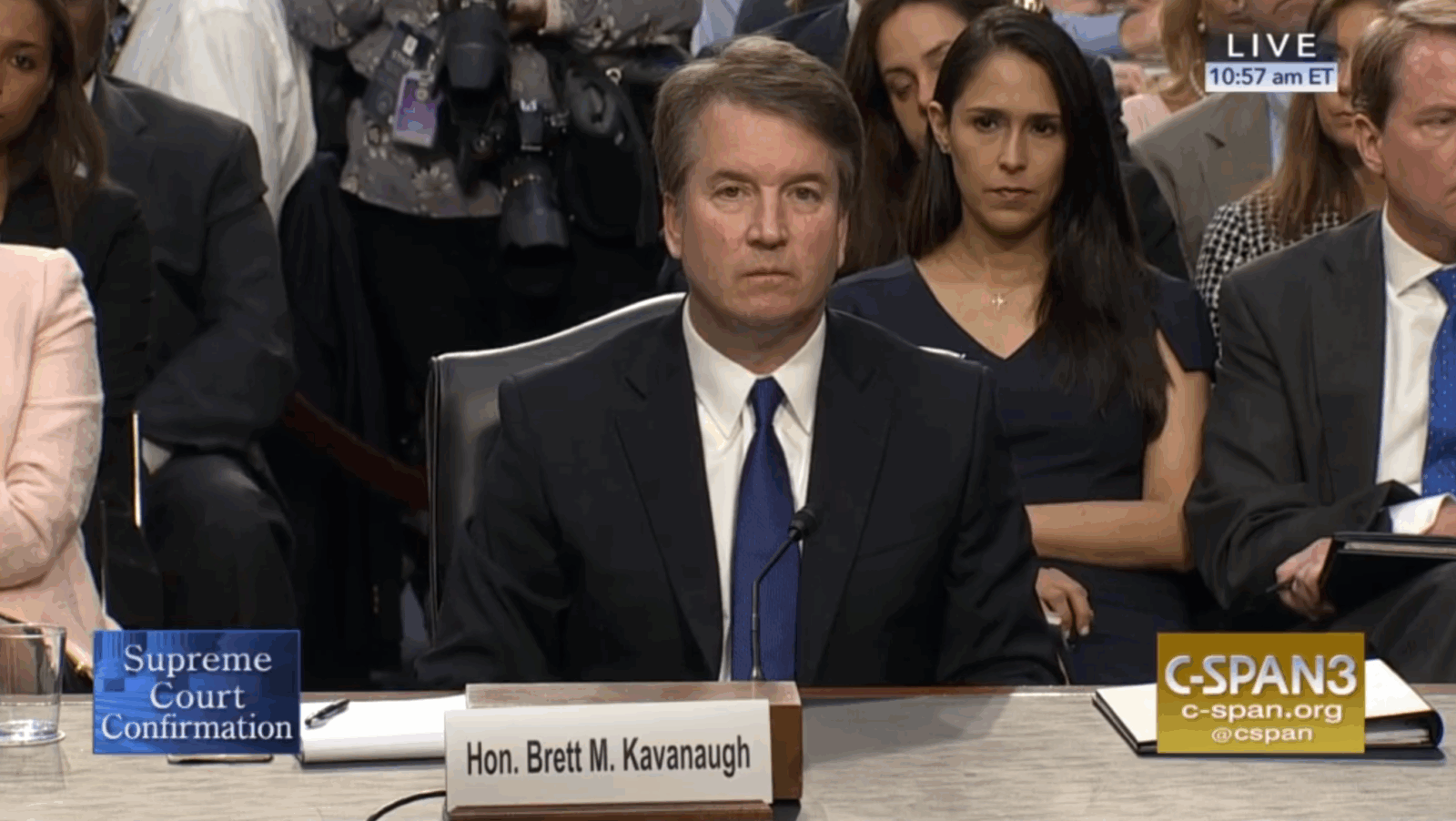December 11, 2018
Kavanaugh’s Confirmation and the Legal Underpinnings of Rape Culture

The recent confirmation of Brett Kavanaugh to the U.S. Supreme Court was a quick and deeply embattled process. Although Republican senators moved to confirm Kavanaugh in a few short months, several accusers would come forward to proclaim that Kavanaugh had engaged in sexual misconduct with them. The testimony of Dr. Christine Blasey Ford was perhaps the most serious, namely, that he attempted to rape her. Despite these serious allegations, a limited investigation was conducted by the FBI, which did not interview her and was kept hidden from the public. The following day he was confirmed by the Senate. This confirmation, however, confirmed something else as well. For those familiar with the origins of modern rape culture, there is nothing shocking about the short shrift that was made of these claims.
Broadly speaking, the origins of rape culture in America have their roots in the law. One major aspect was the British common law’s definition of the crime of rape. For centuries, rape had always required that the forcible act be committed by a man against a woman, not his wife. This common law framing of rape came to American shores in the cultural baggage of British colonists. Hence, in American law, as Pierre Bourdieu’s Logic of Practice might put it, this construct of rape went without saying because it came without saying. In this scheme, rape was possible against a woman only, and anyone but a female spouse. This was the dominant view until the last quarter of the country’s existence.
Another major historical marker was slave law in the new colonies. In some jurisdictions, laws operated in tandem to make the rape of female slaves financially lucrative. This was so because in slave states, the birth status of an individual took the mother’s legal status. So, any child born from a slave mother was automatically a slave. Hence, compared to paying premium prices for imported slaves, slave owners had a vested interest in keeping females reproducing, similar to cattle. Hence, the term chattel slavery underscores slaves as inviolable property.
It is against this historical backdrop of American rape culture that the modern forms exist. Perhaps most prominently is the raw number of rape and sexual assaults across the country. On college campuses, the problem is endemic. In fact, the #MeToo movement arises from the sheer number of women and girls who have experienced sexual assault.
Another area where rape is normalized is American prisons. Although behind bars, the question of gender violence is complicated, in some prison systems sexual violence is systemic. The exact degree is uncertain largely because of underreporting among victims. However, some estimates suggest that tens of thousands of individuals are forced to engage in unwanted sex behind bars each year. More importantly, these numbers speak little as to how many times in a year that a person is forced to have sex. In addition to forcible sexual assault, behind bars individuals can be made prostitutes, sex-slaves, or other types of sexual subservient. Because a slave may be forced to perform several times in a day, there is no real sense of what this means in a year, or more importantly, how it impacts culture on the outside.
To be sure, on the outside, there is widespread sex trafficking, including the trafficking of sex-slaves. In states like California, New York, and Texas, there is concentrated trafficking of both foreign born and domestic sex slaves. In addition to providing real-time sexual acts against women and children, they regularly engage in prostituting children. As these three states operate some of the largest prison systems in the world, there is some degree to which sex traffic rings feed off returning prisoners, who are often penniless and with few housing options.
As current history attests, American culture is still steeped in ways that treat rape as something of a normative concept. This fact works to the benefit of Kavanaugh because it makes even less of his mere attempted rape. Perhaps more than anything, the trivial FBI investigation into the matter suggests the ongoing vitality of rape culture in America.
As the law has held, the privilege to rape has been the monopoly of white males in America. This was shared only when male slaves were allowed to rape female slaves. Otherwise, white men were the only ones free to rape. In Kavanaugh’s nomination process, there has been comparison to Justice Clarence Thomas’ confirmation, which was momentarily derailed by accusations of sexual harassment. However, these comparisons are inaccurate to the extent that Thomas was accused of making explicit sexual comments, while Kavanaugh was accused of full blown attempted rape. It is hard to imagine the same outcome if Clarence Thomas would have faced the same accusation—what to speak if the accusation were by a white woman?
Rape culture in America is the ultimate expression of gender oppression. The sexual economy in this country has been controlled by those who control the law, and Kavanaugh’s confirmation is confirmation of the very rape culture that helped mitigate his actions.
Civil rights, Equality and Liberty, Gender Equality, Mass Incarceration, Policing, Race and Criminal Justice, Racial Justice




